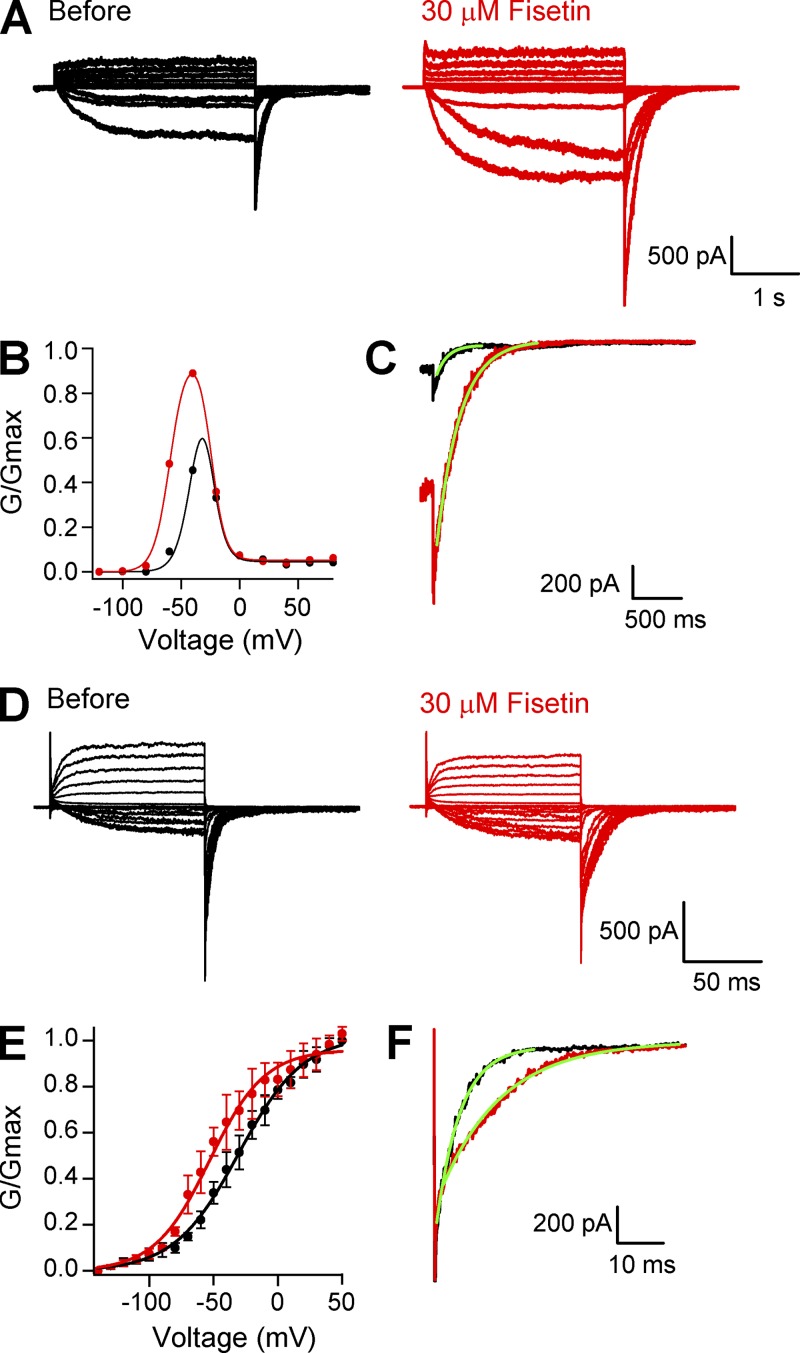Figure 5.
Fisetin regulated mEAG1 channels lacking their amino-terminal or post-CNBHD regions. (A) Representative current traces from mEAG1 Δ2–173 channels, recorded in the inside-out configuration of the patch-clamp technique, in the absence (black) and presence (red) of 30 µM fisetin. Patches were held at −100 mV, and currents were evoked by 3-s voltage steps to depolarizing potentials ranging from −100 to +100 mV, in 20-mV increments, and returned to −100 mV for 1 s. (B) Representative conductance–voltage relationships of mEAG1 Δ2–173 channels with 0 (black) or 30 µM fisetin (red) fit with the product of two Boltzmann functions. For both curves, the V1/2i, si, and sa were held constant at −4.5, 5.9, and 7 mV, respectively. For 0 fisetin, the V1/2a was equal to −19.8 mV, and for 30 µM fisetin, the V1/2a was −39.4 mV. (C) Tail currents at −100 mV after a step to −40 mV were fit with single exponentials (green lines) to give time constants of 116 ms without and 239 ms with 30 µM fisetin. (D) Representative current traces of mEAG1 Δ821–989 recorded in the absence (black) and presence (red) of 30 µM fisetin. Patches were held at −100 mV, and currents were evoked by a series of 100-ms voltage steps ranging from −140 to +50 mV, in 10-mV increments, followed by a 100-ms voltage pulse to −120 mV. (E) The averaged conductance–voltage relationship of mEAG1 channels lacking their post-CNBHD region, EAG1 Δ821–989, recorded in the inside-out patch configuration in the absence (black) and presence (red) of 30 µM fisetin (n = 4). The data were fit with Boltzmann functions to give a V1/2 of −31.9 mV without and −50.6 mV with 30 µM fisetin. (F) Tail currents at −120 mV after a step to +50 mV fit with single exponentials (green lines) to give time constants of 5.2 ms without and 13.4 ms with 30 µM fisetin.

